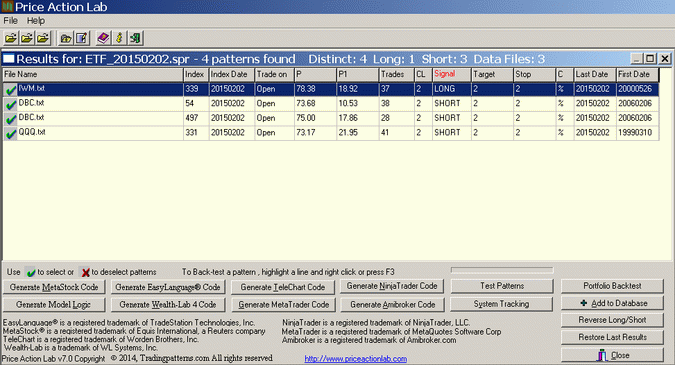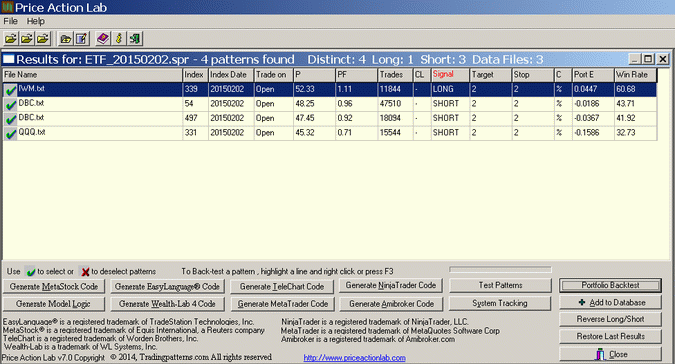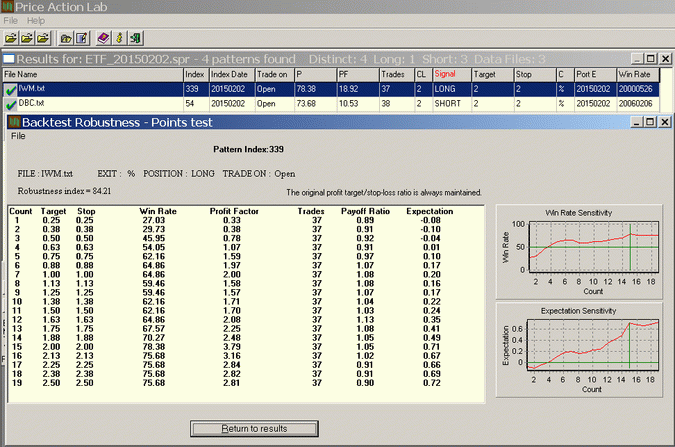Quants have started to realize that mechanical trading systems have certain severe drawbacks and are considering discretionary trading, which allows intelligent decision making based on both experience and quantitative analysis. In this blog I describe how I approach discretionary trading from a quantitative perspective.
Developing mechanical trading systems was a concept that flourished in the 1990s because people thought that by removing emotions from trading the chances of success were higher. But not all emotions are bad, especially if they are based on experience and knowledge of market micro-structure and dynamics. In addition to the notorious problem of data-mining bias that plagues trading system development and has no easy or no solution, traders are realizing that removing emotions also removes human intelligence and a deeper understanding of price action that is difficult, or even impossible, to express mathematically. Hence there is the return to the basics and specifically to discretionary trading but this time within a quantitative context. Mechanical systems still dominate the high and medium frequency spectrum but for position and swing trading the primary style is now quantitative discretionary trading. Below is a list of the main advantages and problems to deal with in quantitative discretionary trading.
Quantitative discretionary trading
Advantages
- Does not remove human intelligence from trading
- Does not tie traders to specific markets
- Forces constant personal improvement by studying price action
- Offers more flexibility in managing risk
- Adjusts to changing market conditions
- No data-snooping is possible since there is no future data
Problems to deal with
- Sample size is usually small
- Data-mining bias is still present
- No out-of-sample cross-validation is possible
- Time consuming task that must be well organized
An example
This example shows how the problems are being dealt with. To identify patterns, I use Price Action Lab. Below is the output of the scan function of the program after the close of Monday, February 2, 2015. Daily unadjusted data since inception were used with the program to scan 12 popular ETFs. We are looking for patterns with more than 29 trades since inception of ETF and with win rate higher than 73% based on 2% profit target and stop-loss (the performance parameters can be changed):
In the screenshot above each line corresponds to an exact price pattern. P is the win rate, P1 is the 1-Bar win rate, Trades is the number of historical trades, CL is the maximum number of consecutive losers and Target and Stop the values of the profit target and stop-loss. C indicates the type of target and stop-loss, in this case it is a percentage added to entry price that is shown under Trade On as the open of next bar.
Patterns in three ETFs were found, a long in IWM, two short patterns in DBC and one short pattern in QQQ. However, trade samples are small and these patterns may be flukes due to data-mining. There is no out-of-sample to test them on because we work with all data that are available and these patterns form as of the close of the last bar in the data files. To deal with the small samples, we will test these patterns first on all S&P 500 stocks with data since 01/2000. If the test fails for all of them, then we stop. Below are the results:
The Last and First Date columns in the original results were replaced by the portfolio expectation and success rate (the number of profitable tickers out of the 500) and the P1 column was replaced by the portfolio profit factor, i.e., the ratio of the sum of winners to the sum of losers.
It may be seen from the above results that the pattern in IWM was profitable in 60.68% of the stocks and the profit factor is 1.11. The number of trades increased to 11,844 from 37. The results for the other patterns show a negative expectation and profit factor less than 1.
Thus, we have determined that there is a promising pattern in IWM that historically has had a significant long bias based on a large sample of trades. Next, we analyze the robustness of this pattern to small changes in the exits:
The Robustness Index is 84.21 (fraction of positive expectations). As it is also shown on the generated graphs, expectation was negative only for profit target and stop-loss loss below 0.63%.
The above analysis means that the pattern in IWM may not be rejected due to curve-fitting but still this does not allow us to accept the pattern based only on these results. The reason for that is that the curve-fitting may be so intelligent that the robustness test cannot identify it. As a matter of fact, over-optimized systems usually tend to be robust to parameter variation by definition. Actually, one may be easily fooled by robustness tests if they are not placed in a proper perspective.
Notes
(1) Quantitative discretionary trading is the future despite beliefs to the contrary. Most mechanical trading systems, including position, swing and trend-following, cannot respond well to changing market conditions any longer in low frequency domain due to the volatility created by medium and high frequency algos.
(2) Most steps followed by quantitative discretionary traders can be automated in the form of a meta-trading system but traders make the final decisions.
(3) Having an edge does not mean that the next trade will be a winner. It only means that if someone follows a quantitative trading method, the probability that equity will be positive after a sufficient number of trades is high but never 100%.
(4) Fast computers and parallel processing are required for scanning many markets and analyzing the results. This is certainly possible nowadays. Meta-filters in the form of expert systems can be used based on the rules of the trader.
(5) A quantitative discretionary trading procedure is similar to a mechanical trading system in several ways but the main difference is that decisions are taken by the trader and not by the system. There are certain decision making processes that are hard to program because of their complexity and as a result traditional mechanical systems may lack that form of intelligence. Therefore, quantitative discretionary trading keeps most elements of quantitative mechanical trading but it allows a broader spectrum of possibilities.
You can subscribe here to notifications of new posts by email.
Disclosure: no relevant positions.
Disclaimer
© 2015 Michael Harris. All Rights Reserved. We grant you limited and revocable permission to create a hyperlink to this blog subject to certain terms and conditions. Any unauthorized copy, reproduction, distribution, publication, display, modification, or transmission of any part of this blog is strictly prohibited without prior written permission.









